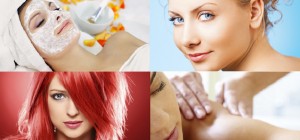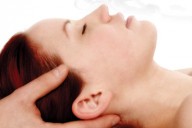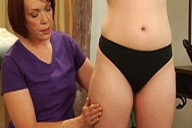The Art of Facial Massage
0Looking back on my career as an esthetician, spa owner and now a manufacturer, one of the most important assets that I had was the ability to administer a perfect facial massage.
Early in my career, clients always booked extra facial massages because they found that not only did the service help them completely relax, but also the benefits lasted longer and resulted in a wonderful, youthful, radiant glow. Truly therapeutic effects can only be achieved when the practitioner has complete scientific knowledge of the skeletal and neuromuscular functions.
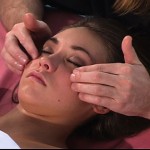
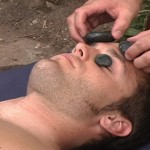 History of massage
History of massage
Massage was practiced by the Chinese 3,000 years ago to help with vitality, and 19th century massage popularity reached its peak as Pehr Henrik Ling (1776–1837) brought it to the United States. Later, Johan Georg Mezger (1838–1909) adapted French names to denote the basic massage strokes used today.
In 1887, Thomas Stretch Dowse, MD, wrote, “Some physicians suggest that stress may be responsible for 75% of all disease in the Western world, including [psoriasis and eczema], high blood pressure, backache, poor eyesight and depression … the solution is to use massage therapy.” How timeless is this statement today, especially in dealing with hard economic times. An anti-stress massage might be what your clients need today more than microdermabrasion. There are, however, some contraindications for massage, such as acne, broken or bruised skin, and clients who have suffered strokes.
Skin foundation
The skin protects a person’s internal organs from injury and infection, and skin elasticity withstands physical pressure and reduces injury. Skin is also an organ of exchange and sensation. Nerve endings in the epidermis respond to heat, cold, touch, pressure, pain and pleasure. So that’s why the correct touch, the right pressure, and the temperature of the cream or lotion that is applied will have an impact on the way the skin reacts. Administration of a successful massage must include the knowledge of muscles, nerves, bones and the lymphatic system, as well as the function and dysfunction of the skin.
Estheticians need to completely understand the histology and structure of the body in order to deliver a good massage because a massage does not merely serve a cosmetic function; it is therapeutic and heals both psyche and skin. Understanding the lymphatic system and the location of the lymph nodes allows for better purification of the skin, and knowledge of muscle composition allows for a better tension-reducing massage.
The network of bones that gives skin its shape serves as an attachment to muscles, protects inner organs and acts as levers to provide body movement. The human body consists of 206 bones, and 22 of those compose the skull. The skull consists of two parts: the cranium—eight bones, and the face—14 bones. Knowledge of the shape and function of the facial muscles is important in order to release the tension and pressure from your clients’ faces.
Lymphatic and nervous systems
The lymphatic system is a key in purification. It serves the role of a filter, removing waste so when it is said that massage helps to detoxify the skin, that is what it means. So often, estheticians have a difficult time explaining the importance of a good massage. Lymphatic massage boosts the immune system; helps ward 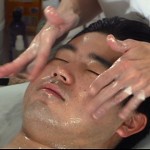 off illness and increases vitality and health; improves the appearance of skin; reduces water retention from poor circulation or pregnancy; can help with pain; and promotes the body’s healing mechanisms.
off illness and increases vitality and health; improves the appearance of skin; reduces water retention from poor circulation or pregnancy; can help with pain; and promotes the body’s healing mechanisms.
The nervous system is divided into the peripheral nervous system and central nervous system. The sensory-somatic nervous system consists of 12 pairs of cranial nerves and 31 pairs of spinal nerves. The cranial nerves are sensory, motor and mixed.
An effective massage
When giving the perfect facial massage, hygiene is a must. Fingernails should be short and unpolished or finished with a clear lacquer, and teeth should be clean. No gum-chewing is allowed and hair should be tied back neatly. When giving a massage, your mind should be clear, your only thoughts should be of your client and you should do what you need to do beforehand in order to clear your mind. Take a few minutes and a few deep breaths before the massage. The client should have 100% of your focus.
The body temperature will drop as clients relax, so it is important to keep them warm. A duvet is thin, yet provides great warmth. Select a cream and adjust its temperature according the client’s energy. Choosing the right product for a facial massage is also very important. You may select a serum and anti-aging cream for a massage treating mature skin, or a more water-based cream for one addressing oily skin. I prefer to use emulsions for dry skin and normal to oily skin. You should be in touch with your client’s needs and preferences. A good massage includes not only the face, but the shoulders and décolleté, and it is important to have a thorough understanding of the areas you are massaging in order to give a truly effective massage.
Remember that correctly administering a massage will provide therapeutic effects. It will stimulate collagen and elastin, improve skin texture, help eliminate toxins, improve circulation, and help to relieve stress and tension resulting in a smoother, healthier-looking complexion. Good luck and let your fingers do the talking.
This article was originally published in the April 2009 issue of Skin Inc. Magazine and is being reprinted with permission. All rights reserved.
